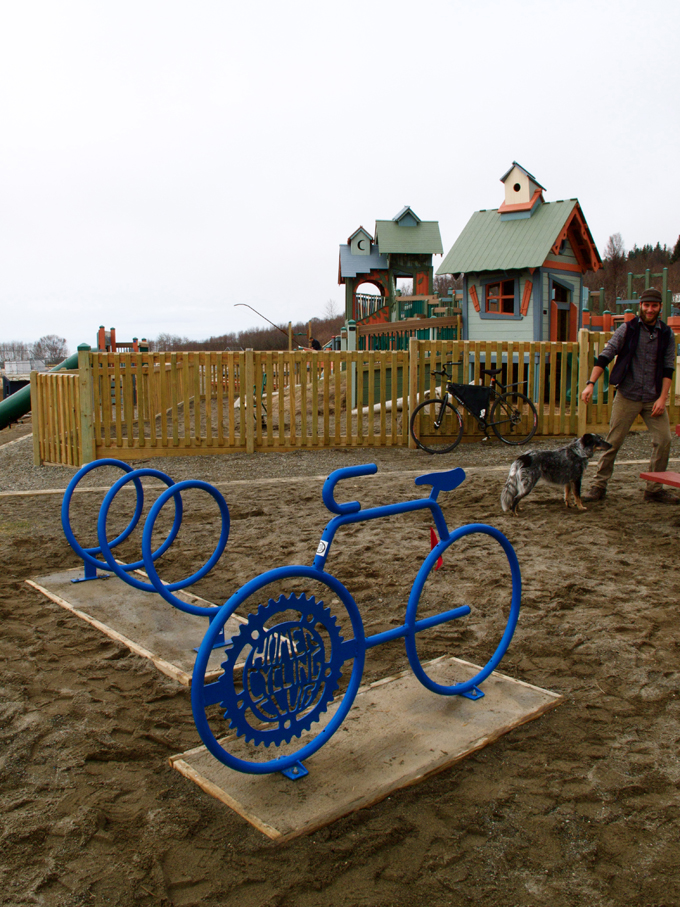As I bike around town I am thrilled to see indication that momentum is building for Homer to become a healthier community. Many of our local individuals, businesses and organizations are devoting energy and resources through various collaborations and projects which offer opportunities to develop and participate in active, healthy lifestyle choices.
There are way too many to list them all here. A partial list of newcomers includes Kachemak Bay Running Club, Alaska Training Room, Seldovia Village Tribe Health Center’s Thriving Thursdays, Homer Playground Project and many successes that originated in MAPP.
Another wellness organization close to my heart is Homer Cycling Club, or HCC. Members of HCC count the Big Fat Bike Festival among their accomplishments. The festival raised enough money to purchase and install an eye-catching and functional bike rack at Karen Hornaday Park.
HCC is the force behind Bike to Work week events in Homer. Maybe you have noticed the increase in cycling this week. It’s not too late to join in. Friday is the nation’s 57th Bike to Work Day, with the tradition being enjoyed for the eighth year in Homer. Club members will host an Energizer Booth, with coffee and snacks, from 7 a.m. to 9 a.m. at WKFL Park on Pioneer Avenue. Bike to Work Day is rooted in encouraging people to bike as part of their every day lives.
Finding time for a new exercise routine or adopting a healthier lifestyle change often seems intimidating or overwhelming. At the individual level one of the advantages of deciding to bike as a method of transportation is that it becomes relatively easy to fit in the recommended amount of daily exercise.
In addition to low-impact cardiovascular exercise, twice a day commuter cycling has other benefits, including increasing stamina, reducing stress, and improving coordination and balance. Saving money on gas and car maintenance is a pretty great side effect, too.
At a community level cycling as transportation reduces motorized traffic on our roads, reduces wear and tear to our roads and, as individuals become more healthy, reduces health care costs for employers and tax payers. Studies show that our roads become safer for all users when more people choose to bike.
Expanding out beyond that global health is improved by the reduction of pollution from fossil fuels, and while each individual has a minuscule impact collectively it becomes significant.
Bike commuting is not a good fit for everyone, however many of the benefits can still be gained by recreational biking. Biking with children, or at a relaxed pace (8 mph or less) can be fun on either of the paved recreational trails. They offer miles of scenic biking along the Spit or East End Road. Remember to watch out for trucks and cars crossing the pathway; they may not look for you, especially if you are traveling against the traffic flow. Evidence shows that if your average speed is 10 mph or greater then traveling on the road as part of the regular traffic is actually the safer place to ride.
Safety is the part that opens up Bike To Work Day, and every other day, to all road users. Even if you never ride a bike you can participate by supporting those that do by giving bikes a little extra space, becoming familiar with hand signals and being patient while waiting for a safe time to pass. Cyclists should ride predictably, use hand signals, follow the rules of the road and be visible.
Four wheels, two wheels, one road. Roll together.
Catriona Lowe is a member of Homer Cycling Club and a year-round bike commuter.


